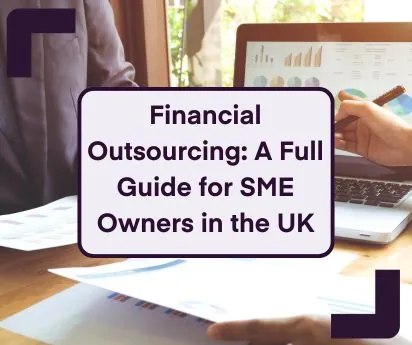
Break-even formula: What is it and how can you calculate it?
6 Aug 2020Breaking even is a pretty straightforward concept to most business owners, but there’s a lot more to your break-even point than you may realise. On a rudimentary level, breaking even is when your total business costs are equal to the revenue you generate, but you can gain a lot more insight about your business from running a regular break-even analysis. There are many factors to consider when you run a business:
-
Rent
-
Rates
-
Wages
-
Supplies or materials
-
Tax
Not all businesses start out profitable, but you’ll need to know precisely when you achieve that, plus the total costs you’ll need to overcome to get there. Whether or not your business is viable will depend on whether it’s capable of getting there before investment runs out, if it’s robust enough to deal with variable cost factors, and if you can maintain your sales in the longer term.
Why it’s so important to know about your break-even point
Reaching your break-even point is equivalent to making it to base camp when you’re climbing a mountain. It provides the platform you need to progress further, and it’s the mainstay of the entire endeavour – so you need to know what influences your break-even point from the very start.
Any business is dynamic. Things rarely stay the same for long, and you need to be aware of where you stand concerning your break-even point at all times. That’s because it defines so many of your goals and targets. It’s the difference between making and losing money, but it also influences the net worth of your business.
No matter what your ultimate objectives – whether you want to make a steady income or you eventually want to sell your business, for example – your break-even point is essential for monitoring your progress.
Related: How To Read A Company Balance Sheet
How can you work out your break-even point?
So, calculating your break-even point is about the difference between your total costs each month and the total revenue you generate in the same period. Remember that variable and fixed costs are different:
-
Fixed costs don’t depend on sales. Think about your electricity costs, payroll, and rent.
-
Variable costs change according to how many sales you make. They cover things like extra staff, supplies or materials, and shipping or transport costs.
Related: VAT e-commerce: Selling goods to EU after Brexit
Your own break-even formula
Every business out there is unique, but you can apply the break-even formula to understand not just how many sales you need to make to cover costs but how each factor influences that and which ones are subject to change as you grow.
Unit sales per month = Fixed cost ÷ (unit sales price – unit cost)
Let’s say your business makes pet food. It costs £1 to make a tin from start to finish – that’s your unit variable cost. The sales price of one can of pet food is £2.50, which is the unit sales price. You work out your total fixed costs each month – such as paying staff, utility bills, and renting your premises – and that comes to £6,000. You’ll need to sell 4,000 tins of pet food before your revenue covers your total costs. Here’s your break-even formula:
4,000 Unit sales per month = £6,000 fixed cost ÷ (£2.50 unit sales price – £1 unit cost)
Why is ongoing break-even analysis so critical?
It doesn’t matter whether you sell a single physical product or provide a selection of services; you treat each one as a unit of revenue. Analysis is all about figuring out how many units you need to sell in order to cover both the variable and fixed costs associated with making or providing them. After you’ve managed to reach that point, it’s about knowing how much profit you’re making. Essentially, it allows you to estimate the net worth of your business, keep an eye on how variable rates might alter the current situation, and react decisively to any changes.
Remember that achieving targets brings a new set of challenges. When you begin to grow, you’ll need to factor in extra staff, materials, and maybe even bigger premises. Having an accurate idea about the costs behind your business will enable you to meet those challenges head-on and with confidence.
You can’t have a killer business plan if you don’t understand what it takes – and what it costs – to make your business tick. When you examine your accounts each month or week, break-even analysis allows you to read between the lines and understand the bigger picture.
Related: What Are Abridged Accounts? Example And Short Guide
Related: What Are Statutory Accounts? A Short Guide
Setting realistic targets
Knowing the dynamics of your break-even point will help you set targets that correspond with what’s possible but won’t set you up for failure. It protects against underachieving while keeping a firm lid on any unrealistic expectations. You can’t pluck expected progress out of thin air – it can cause issues with morale and leave you vulnerable to fluctuations. It’s essential to base your targets on the ongoing cost of doing business.
Related: What is the most tax efficient way to extract cash from your business?
Knowing your fixed costs from your variable costs
Especially when you’re growing a business, it’s supremely helpful to know the difference between which costs might change and which ones remain the same:
-
Overheads like rent, for example, won’t change from day to day or month to month, so it’s essential to consider that when you plan.
-
On the other hand, the cost of materials and staff is likely to fluctuate according to various factors largely outside your control.
Developing a new product line or upping production levels can bring unexpected costs, for example. Component suppliers could react to market forces with an increase in prices. It’s essential to build contingency into any grand plan, but you should only be doing that with variable costs, not fixed ones – or you could miss out on potential profit.
Steering the ship
How well you understand the factors that affect your break-even point will determine how ready you are to react when something changes. It influences every aspect of how well your business performs.
When unit sales drop off, spotting it early can help your marketing people understand why. Is there a rival product on the market? Has a new consumer trend impacted your product? Is your shipping company performing?
Have profit margins narrowed because of increased material costs? Are output and production at optimal levels, or is there a supply chain problem? Can you lower your overheads to compensate, renegotiate supplier terms, or address production issues?
Speak to one of our friendly accountants
Figuring out your margins and juggling cash flow can be complicated and time-consuming. Our team of small business accountants are highly-experienced in helping companies with professional advice that can maximise income while reducing stress and tax liabilities.
Get in touch with us today for further advice on 0207 043 4000 or info@accountsandlegal.co.uk. You can also get an online accountancy quote in 60 seconds.



















